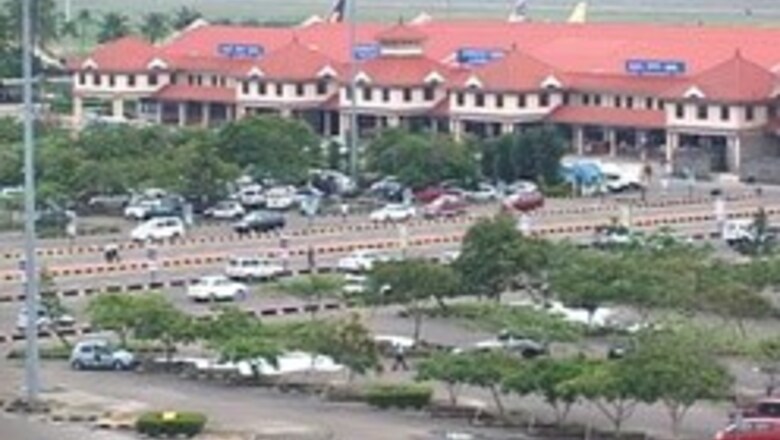
views
(The author, Elyes M'Rad, is the Regional Vice President, Sales and Relationship Management, South Asia and India (SITA). The views expressed here are his own)
 State of Indian airports
State of Indian airports
The peculiar situation in India is that air traffic is concentrated at a few key airports. There are 16 airports offering international services and another eight that connect domestic sectors.
These 24 airports together account for a whopping 94 per cent of traffic and the balance is spread over 36 smaller or regional airports.
Presently, India has only 80 fully functional airports equipped to handle scheduled commercial, charter and defense services.
There are another 368 landing strips that function as makeshift airports for limited purposes. As many as 156 belong to the defense or semi-defense sectors and various state governments, while 63 are owned by the private sector.
India's Civil Aviation Ministry has set a target of having 500 operational airports in the next 12 years, according to a report by Centre for Asia Pacific Aviation (CAPA).
According to CAPA, this will include the ongoing redevelopment of currently unused airports or little used airports and development of greenfield and cargo airports.
Remarkable growth in Indian aviation sector coupled with 8per cent growth in GDP has opened a great opportunity for investment in the Indian aviation sector.
Even as only 3 people per 100 travels by air in India compared with China's 10 per 100, passenger traffic is booming. Domestic passenger traffic is expected to double to 60 million by 2010 and reach 200 million by 2020.
This growth is facilitated by lower cost of operations which invariably is transferred to the customer in terms of cheaper air tickets.

PAGE_BREAK
IT as a facilitator for the transformation
Technology is playing a critical role in the proficient management of the modern airports.
The surfacing of new technological solutions provides airport operators with opportunities to integrate the different elements of their operations to ensure more efficient and cost effective airport management.
Current and future use of kiosk check in

Technology will provide the means for airports to maximize revenue opportunities and reduce costs.
Technology is the major drivers of change for both passenger and cargo management systems and it delivers economic improvements to airport operators.
Passenger self-service is playing an increasingly strategic role across the industry and is moving from being an alternative to a primary channel.
Airline kiosks are now offering the traveler a variety of functions including ticketing, flight check-in and printing boarding passes and hold great promise in future. Internet holds great opportunity for airports to drive efficiency and customer friendly regime with reduced cost structure.
SITA, leading service provider globally of IT business solutions and communication services for the air transport industry, in association with Airline Business, leading magazine undertake IT survey every year. The following graph from 2007 IT survey depicts the processes in the aviation value chain which are high in the priority list of CIOs.
This global survey is aligned with the priorities of CIOs of Indian airlines and airports. India will witness huge growth of IT penetration in customer facing processes in the whole life cycle. SITA’s partnership with AAI for implementation of Airport ConnectOpen to modernize 13 non metro airports, CUSS with MIAL and CUSS & Baggage Reconciliation System with BIAL is the classic testimony for this trend.
The following graph from Passenger Self Service survey by SITA depicts the paradigm shift in the passenger’s behaviour.
CUSS (Common Use Self Service) will be a great tool to decongest the airports; this will empower customers to get their boarding passes from places like malls, hotels and railway & bus stations. This will change the face of airports traffic pressure on check in counters. Common Use Terminal Equipment (CUTE) has been fairly penetrated in Indian airports, both passengers and airlines have gained through CUTE technology. RFID (radio frequency identification) technology can bring substantial benefits to the air transport community in the form of cost reductions, improvements in productivity, customer services and safety. While RFID offers the potential of improvement in the processing of bags at the airport (RFID readers read more reliably than bar code readers), the greatest benefit will be the ability to integrate. This will also allow systems at any airport to identify immediately and automatically a mishandled piece of baggage, collect handling instructions from the airline responsible for the bag and route it to its correct destination. Similar benefits and more are expected from handling cargo and containers, or the management of other assets used at the airport or within an aircraft. Ground-to-air radio telecommunications & air-to-air communications services will see huge IT penetration in India.
The biggest challenge the aviation sector in India in India is facing is the optimisation of resources - manpower, aircraft utilisation and revenue and IT application is surely an enabler in this endeavour.
India will witness more usage of the Internet and mobile to make travel cost-effective. Direct selling through Internet and mobile will help airline cut costs on agency commissions; IT will be the backbone of the aviation business, Technology in flight will become the key differentiator in times to come, extended applications like video-on-demand, phone-on-demand and Internet access will become value added services in long haul flights.
IT has played a pivotal role reducing the cost of operations; this is all more relevant in the era of high cost of aviation fuel and time of global economic uncertainty. IT will be used not only with the objective of reducing the cost but will also extend competitive advantage through process excellence through implementation of IT product and solutions. Manufacturing as an industry has seen this phenomenon in late 70s and Banking in early 90s. This decade will be for aviation.
IT is an integral part of the aviation industry and helps in making the business more competitive, profitable and customer friendly.















Comments
0 comment